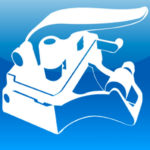Alex Martinez Discusses his Career in Audio Mixing
August 15, 2019, 09:28 AM
https://www.aotg.com/alex-martinez-discusses-his-career-in-audio-mixing/
Q: Tell us a little bit about who you are and what you do.
A: I’m the audio operator for Univision Noticias, the news
wing of Univision Network, where I’ve had the privilege of working for roughly
seven years. I mostly cover our live network news shows. This includes Primer
Impacto, Noticiero Univision, Noticiero Univision en UniMás
and Noticiero Univision Edicion Nocturna. I also work on the bigger
special news events, such as U.S. State of the Union speeches, U.S. and Latin
American election coverage and Papal visits around the globe, among many
others.
Q: How did you get into the broadcast audio business? What
made you realize this was the career path you wanted to take?
A: I got into broadcast because of my love of audio, our
fast-paced schedules and the content we cover. I love working under pressure.
Whether a breaking news event across the world or a presidential election here
in the states, my team always seems to really shine in these scenarios; and I’m
happy to be a part of that. I also gravitated to broadcast because I
wanted to mix for a larger audience. The growth potential at the network level
to go from live concerts to in-studio and live broadcast is huge, you can’t get
much larger than a network seen by so many in the U.S. and simulcast to so many
other countries around the world.
But my foray into audio dates back to high school, when I was
working for a friend of mine who was a DJ at a local radio station. Back then,
I made $50 a night, mostly lugging record crates in and out of appearances, and
got to hang with them during the events. That was my first experience seeing
the power that audio has over listeners’ emotions and their way of thinking. I
was hooked. I wanted to learn how the recipe was put together. Soon after, I
began an apprenticeship with a local club owner who, for the next decade,
taught me signal flow, how to mix and even “why†circuitry behaves the way it
does. Mixing live bands solidified my love for audio mixing and the technical
prowess needed to do it properly. It was halfway through this apprenticeship
that I decided to formally go for a second college degree, this time focused on
audio.
Q: What lead you to Univision?
A: It was serendipitous, really. I was working for Avid’s
Pro Tools Certification School as a student advisor, and Univision called one
day because they wanted to look into certifying their audio operators. However,
they needed the instructor to be bilingual. The call came to me as I was the
only on-site advisor who was bilingual. They invited me to their studios for a
tour, and I fell in love with the fast pace and high energy on set. They just
so happened to have been looking for a new audio operator, and I jumped at the
opportunity.
Q: How have you seen audio technologies, and the way sound
is captured, mixed and delivered, evolve over your career? How has this changed
programming or the way you work?
A: When I started in audio, we were still using tape- and
reel-to-reel, so I think it’s safe to say that audio technology has evolved
tremendously. The progression from recording in analog to recording on digital
and non-linear editing has been the biggest change I’ve seen. Everything is
instantly available to mix and edit. We’re able to turn a recorded segment,
edit it and send it to master within seconds. This has allowed us to now be
able to update any relevant news within minutes and have it ready for the next
airing on the next time zone.
On the delivery side, the current broadcast standard may no
longer be accurate. The biggest change I’ve found is that now we’re mixing more
for on-demand audiences who are tuning in on different platforms. I foresee our
format changing in the next few years and adapting to this as a norm. Similar
to the way in which music migrated from CD-quality to MP3 formats, so, too, will
broadcast evolve in the same manner. Audio engineers will have to overcome the
challenge of its viewers tuning in from home theater setups in 5.1 and mono
firing speakers from a smart phone streaming live from a social media site.
Automating certain tasks will also become more frequent.
Q: What do you see as the biggest change to the way programs
will be mixed in the next five years?
A: The biggest change is the immediacy of everything, and
the quality it’s sent in. The amount of signal loss and compression that occurs
when something is streamed is going to be a huge factor in the upcoming years.
Everything newsworthy will be based off social media and how quickly we can
come on-air to inform our audiences. I just hope we don’t lose the artform of
mixing in the evolution to social media and automation. When you automate
certain audio protocols, you lose that touch that makes our shows so engulfing
and emotional. I can lead our audiences through the emotional highs and
lows and transitions of our stories on-air and have them feel as though they
watched one cohesive show – not just a bunch of random stories smashed
together. This is only achieved with actual mixing within proper dynamic range.
Q: What is the workflow that you follow?
A: For most shows, I sit with the director and go through
the rundown he created with the rest of production. Based on the show’s needs,
I’ll then go meet with our floor manager and tell him which mics and combos I
need, and what the show will require for each individual segment. Everything is
dictated based off how much movement we have: how many guests, translation
requirements, etc. Then I work with the technical production manager to discuss
the live satellite feeds. At that point, we patch the live feeds into one of
our Calrec consoles and clean them up as needed so that they are
broadcast-quality and level. Lastly, we establish communication with our
internal studio and any necessary external sources and fold-back mixes. This
would also include any mix minus needed for said show.
Q: What Calrec consoles do you use? Are there any features
that make your job easier, help you to produce a better-quality product,
benefitted your workflow or increased your productivity?
A: Currently, I use the Calrec Artemis set up as 48-fader
frame, but I actually started mixing broadcast audio on the Alpha. Univision
also currently deploys the Apollo, but I prefer my beloved Artemis, and the
Summa console for smaller productions.
The ease of patching and routing on the Calrec Artemis has
been a game changer. The console allows me to do everything internally, and
from the comfort of my mix position. It has completely eliminated the need to
go to any type of patch bay, while the flexibility of internal routing saves me
a lot of time. Whenever necessary, I can quickly route anything the director
needs and adapt to any changes without worrying that I am sacrificing my
attention to the mix.
Then, there’s the most important part: the sound. As mixers,
we sometimes forget how a clean signal can drastically ease our tasks. The
console itself is the clearest console I’ve ever had the pleasure to work on.
The noise floor is so low that it’s imperceptible, thanks to the EQ and compressor.
There’s no unwanted color or harmonics, it’s amazing how clean it
sounds. It allows the elements to just sit in the mix and mingle with each
other, instead of fighting for the audio space.
Q: Can you think of a time when the Calrec consoles helped
resolve any problems you were facing during a production?
A: There was a time during the 2016 U.S. election that we
had to use multiple studios, which required different control rooms. We had to
unite them and work out of three studios simultaneously with continuous
translation – from Spanish to English and English to Spanish – to air,
throughout. At one point, I believe we had about 12 translators going simultaneously.
Of course, this was in addition to our in-studio talent, guests and live feeds.
The broadcast was aired live on our two networks and simulcast on social media.
Due to the flexibility of the Calrec console, I was able to route all audio,
mix minus and outputs (with different reference levels) without having to rely
on other control rooms for additional I/O or submixing.
Alex Martinez Discusses his Role at Univision Noticias and the Future of Audio Mixing
#mixing#production#studio#console#broadcast#live#calrec audio#univision
Newest from AOTG.com
-

Daniel George McDonald on Editing Cheer's Season 2 Finale
Daniel George McDonald sits down to discuss creating the finale for Cheer Season 2.
-

Editing The Black Lady Sketch Show
Gordon sits down with the editorial team of The Black Lady Sketch Show to discuss their approach to ...
-

Philip White on Crafting A Madea Homecoming's Music
Gordon sits down with Philip to discuss his work with Tyler Perry and his latest film A Madea Homeco...
Site Links
Tools
Sister Sites
© 2007-2025 www.aotg.com Ver. 3.0 All Content created and posted by Art of the Guillotine users Art of the Guillotine graphics, logos, designs, page headers, button icons, scripts, and other service names are the trademarks of Art of the Guillotine Inc. Use of this material outside of this site is strictly prohibited.